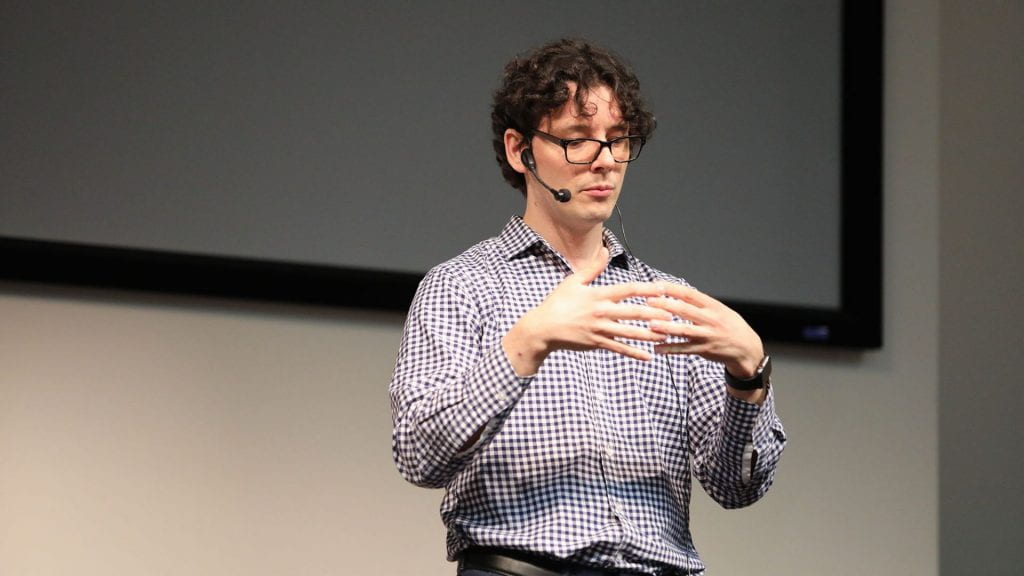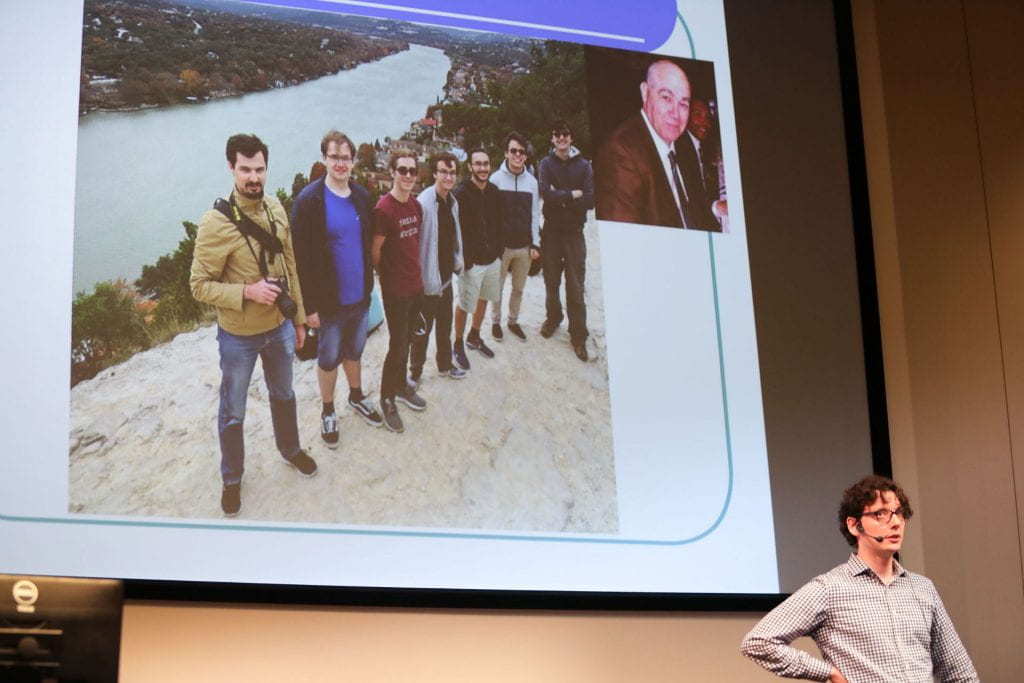Everyone sees the world differently. People read at different paces, have different points of focus, and will move their eyes along the same path in different ways. Your eyes are as unique as a fingerprint!
At Texas State University, Dr. Oleg Komogortsev, professor in Computer Science, is leading research into eye movement biometrics and human computer interaction. His research involves futuristic concepts from virtual reality to eye scanning and eye sensor technology. The impacts could be far-reaching. – creating improvements in cybersecurity, health assessment, and many technology innovations.
Dr. Komogortsev’s work has earned him the 2019 Presidential Seminar Award, which is the highest research honor at the university, and a 2017 Presidential Early Career Award for Scientists and Engineers (PECASE) from President Barack Obama.
In the “Minority Report” movie clip shown above clip above, Tom Cruise walks through a subway station and computers immediately identify him and display advertisements in the direction he is looking. Dr. Komogortsev’s research involves similar concepts. His research tackles a few issues: how the environment is able to detect a person’s identity from a distance, how a person can interact with their environment by moving their eyes, and how the environment can detect where a person looks and present the content where their eyes are looking.
“It is very interesting because it gives us insight into what the future is going to be and the technology of the future,” Dr. Komogortsev said about his research during his Presidential Seminar presentation on Feb. 18.
Dr. Komogortsev showed the clip above during his presentation. It shows two people’s gaze tracked by computers when watching a “Lord of the Rings” trailer. While each person generally look at the same things, the exact points their eyes look at and the way they get there are unique. In his research, there are three types of eye movements he looks at:
- Eye-fixations: The eye is stable in regard to the object of interest.
- Saccades: Eyes move between eye-fixations very rapidly.
- Smooth pursuit: Eyes follow an object.
Eye tracking technology records eye movements and analyzes their features.
“The purpose of eye tracking is to reduce the computational burden that the device is experiencing while generating the environment that we can see,” he said.
Research Applications
Cybersecurity
Movements of the eye are unique and harder to artificially replicate than a fingerprint, making eye sensors an accurate and secure way to authenticate a person. People’s eye muscles are unique, so it would be difficult if not impossible for hackers to try to mimick the unique patterns of a person’s eye movements.
“If you think about the iPhone and Face ID, everyone is able to use the system and it is extremely easy to use and authenticate you,” he said. “The research question here is can we have a type of sensor and algorithms that work for billions of people? People are very different and how their eye appears and how they browse.”
Health Assessment
Dr. Komogortsev is currently collaborating with Dell Medical School at the University of Texas, Austin, to explore applications of eye tracking in the health field. Many diseases such as Parkinson’s, for example, involve symptoms with eye movement. Devices could help detect neurological or other visual issues, helping to assist a person or alert them to see a doctor.
“If you look at concussions, that is a very big problem these days, in sports,” he said. “In the lab, we look at certain biomarkers and they derive from the eye movement signal that we are able to collect.”
The data collected could be used to refer a person to a neurologist, Dr. Komogortsev said.
“Healthcare is going to be a big thing for virtual reality, because you can put a person in a different environment and not only measure their different eye movements but also their different experiences.”
Virtual / Augmented Reality
Research into eye movement tracking and biometrics will also help further the advancement of virtual reality (VR) and augmented reality (AR) technology. These devices require that visuals be rendered where a person is looking, so eye movement research is a component of further innovating VR and AR.
“If you can imagine a world where an augmented reality device will just be a part of our glasses, it will have a profound change in our lives,” he said.
In the future, we may have augmented reality devices instead of smartphones and there will be many different things we can do as a result of the easy access to AR.
“My vision for the future is that virtual reality devices will have eye tracking hardware and that augmented reality will have a very large change on our society,” he said.
Student Researchers
Texas State students are helping lead the way with Dr. Komogortsev’s research. The research team includes students Dillon Lohr, Vladyslav Prokopenko, Dmytro Katrychuk, Samantha Aziz, Eugene Hanson, and Henry Griffith.
Texas State University is leading the way in technology innovation, and the Division of Information Technology’s blog is your source to keep up with what’s happening. Be sure to check out our other stories.
Steffanie Agnew is the digital marketing strategist in the IT Marketing and Communications office.



